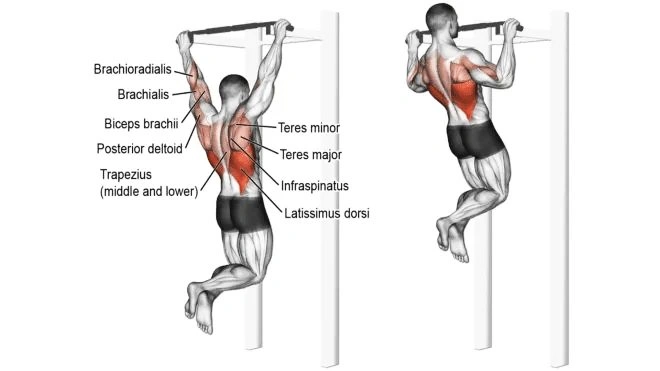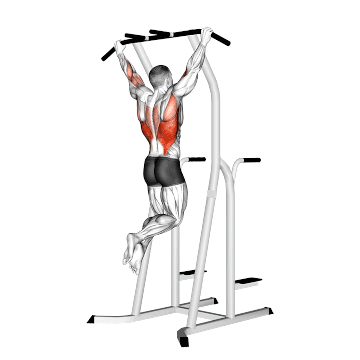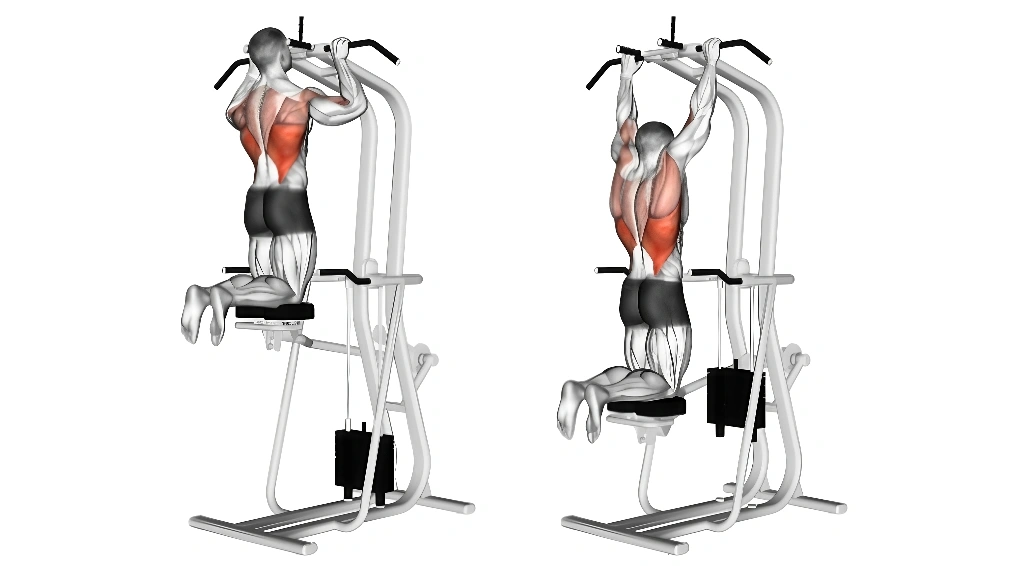How many sets of pull ups should I do?
Honestly, I’ve asked myself that so many times. First day at the gym, just staring at the bar. Three sets? Five sets? No clue.
Some people say more is better. Others swear by fewer, high-quality reps. And while you’re still thinking, that guy next to you already finished his workout.
Truth is, there’s no magic number. It depends on your goals. Your energy. Even whether you just had lunch.
So, let’s talk. How to figure out the right number of pull-up sets—so you train smart, and don’t burn out.
Key Factors That Decide Your Pull Up Sets

How many pull up sets you should do comes down to four simple things.
No magic tricks. No overthinking. Just these.
1. Your Goal
Strength? Go for fewer sets, heavier effort.
Muscle growth? Stick to moderate sets with steady reps.
Endurance? More reps, shorter rest.
👉Example: Training for a competition? You won’t train the same way as someone chasing that wide V-taper beach look.
2. Your Experience
Beginner? Start with 3 sets.
Intermediate? Aim for 4–5 sets.
Advanced? Adjust based on your recovery and progress.
👉Example: First month in? Don’t try to match the guy who’s been grinding for five years.
3. Recovery & Frequency
Train often → Fewer sets per session.
Train less often → Push harder each workout.
👉Example: If you’re hitting pull ups three times a week, you can’t max out every day—unless sore lats for a week sounds fun.
4. Other Exercises
Pull ups first? You’ll have more in the tank.
Pull ups last? Conserve energy.
👉Example: Still got rows and presses ahead? Don’t burn all your fuel on the pull up bar.
How Many Sets of Pull Ups Should I Do by Training Level
Recommended pull up sets by level? It’s not the same for everyone.
It depends on your body, your goal, and how long you’ve been training.
Here’s the quick guide so you can start smart.

Beginner – Start Light and Build
Do: 3 sets.
Why: Enough to learn the movement and build basic strength without overloading your body.
Example: Like learning to drive—you don’t start on the freeway at full speed.
Intermediate – Push, But Smart
Do: 4–5 sets.
Why: Your muscles can handle more now, but recovery still matters. Gradual progress beats burnout.
Example: Like adding spice—just enough makes it better, too much ruins the dish.
Advanced – Go Heavy, Go Specific
Do: 5–6+ sets.
Why: Your form is solid, so you can increase volume or add weight to hit your goal.
Example: Hanging plates from your belt while people in the gym start watching.
How to Know How Many Sets of Pull Ups You Should Do
Wondering if you’re hitting the right number of pull up sets?
Here’s how you can tell—clear signs you’re on track, or not.
- Your form stays solid. First rep looks like the last. No swinging, no half-reps. If form breaks down halfway through, you’re doing too much.
- You feel worked, not wiped out. Muscles are tired, sure, but you’re not so sore you can’t move for three days. Overkill slows progress.
- You see steady improvement. More reps, more weight, or shorter rest over time. If numbers aren’t moving, your set count might be off.
- You recover in time for the next session. Ready to train again in 48–72 hours? Good. Still hurting when pull day rolls around? Cut back.
Bottom line—if you keep form, feel challenged, recover well, and see progress, your set count is probably right where it should be.
Sample Pull Up Plan
Here’s a plan you can follow based on your current level. It includes sets, reps, rest, and how many times per week you can train pull ups.
| Level | Sets | Reps | Rest | Times per Week |
|---|---|---|---|---|
| Beginner | 3 | 5–8 | 90 sec | 2–3 |
| Intermediate | 4–5 | 8–10 | 60–90 sec | 2–3 |
| Advanced | 5–6+ | 10+ | 60 sec | 3–4 |
- Beginner – Focus on clean form and building strength. 2–3 sessions a week gives enough practice without overloading your joints.
- Intermediate – Add volume gradually. 2–3 times per week works for most, with at least one rest day in between.
- Advanced – Push for higher volume or add weight. 3–4 sessions a week is possible, but manage recovery carefully.
So… how many sets of pull ups should I do?
Honestly, it depends—on your goal, your level, and how fast you bounce back after a workout. If you’re just starting out, 3 sets might be plenty. Been at it a while? Maybe 4 or 5. Seasoned pro? Go 5–6, or throw on some weight and see how it feels.
These numbers? Just a starting point. Listen to your body. If your form’s getting sloppy, cut it back. If you finish and feel like you could do more—do more.
And one last thing—keep at it. Two or three solid sessions a week will crush one “go hard” day followed by six days of doing nothing.

Hi, I’m Alex Carter, part of the editorial team at Leadman Fitness. We specialize in crafting premium custom racks, cable machines, functional trainers, and strength accessories for home and commercial gyms. With a background in competitive powerlifting and gym design consulting, I’ve spent years testing gear under heavy loads and optimizing layouts for efficiency.
I focus on translating real-world user frustrations—like space limitations, budget constraints, or durability needs—into actionable solutions. By collaborating directly with our engineers and facility owners, I ensure our custom equipment evolves to solve the unspoken challenges lifters face daily. What I share isn’t textbook advice; it’s battle-tested insight from racks I’ve welded, cables I’ve replaced, and gym floors I’ve trained on.
